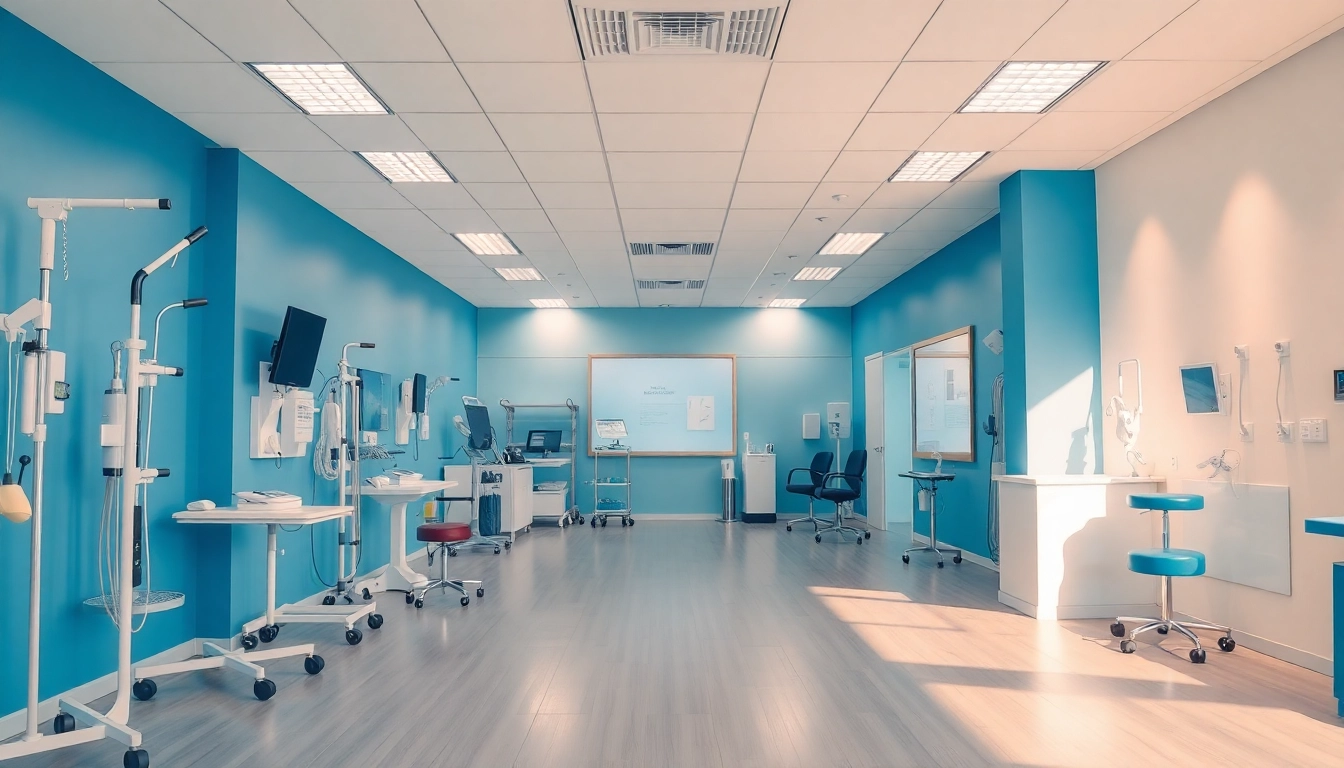
Understanding Rehabilitation Equipment and Its Impact
What is Rehabilitation Equipment?
Rehabilitation equipment forms the backbone of recovery for patients following injuries, surgeries, or medical conditions affecting their mobility and daily functionality. This category of equipment includes a wide range of devices designed to assist individuals in regaining strength, mobility, and independence. Examples of rehabilitation equipment include mobility aids, therapeutic devices, and adaptive technology that cater to specific needs of patients across various stages of recovery.
The Role of a Rehabilitation Equipment Supplier
A Rehabilitation Equipment Supplier plays a critical role in the healthcare landscape by providing the necessary tools for effective rehabilitation. They offer not just equipment, but also a wealth of knowledge regarding product specifications, suitability for different conditions, and ongoing support. The ideal supplier understands the evolving needs of healthcare professionals and patients alike, helping to bridge the gap between rehabilitation requirements and optimal outcomes.
Key Benefits of Quality Rehabilitation Equipment
Quality rehabilitation equipment offers numerous benefits that directly impact patient recovery:
- Enhanced Recovery Speed: Well-designed equipment speeds up the healing process by promoting active engagement in physical therapy.
- Improved Patient Safety: High-quality equipment reduces the risk of further injury during rehabilitation.
- Tailored Solutions: Access to a variety of specialized tools allows tailoring rehabilitation programs to individual needs.
- Increased Independence: Properly functioning equipment empowers patients to regain their independence in daily activities.
Identifying Your Needs: Types of Rehabilitation Equipment
Common Equipment for Physical Therapy
Physical therapy commonly utilizes the following rehabilitation equipment:
- Resistance Bands: Used for strength and flexibility training.
- Therapy Balls: Support functional training for balance and coordination.
- Parallel Bars: Aid in gait training and balance improvement.
- Continuous Passive Motion (CPM) Machines: Provide passive movement of joints to encourage rehabilitation without strain.
Adaptive Devices for Daily Living
Adaptive devices are essential for patients with mobility limitations. These devices include:
- Grab Bars: Installed in bathrooms to support users in maintaining stability.
- Reachers and Grabbers: Help patients pick up items without bending or stretching.
- Modified Utensils: Designed to improve grip and usability for individuals with dexterity challenges.
- Wheelchairs and Scooters: Ensure mobility for individuals who cannot walk unsupported.
Understanding Specialty Equipment Options
Specialty rehabilitation equipment is often tailored to unique conditions or patient populations, including:
- Neurological Equipment: Devices that assist those recovering from strokes or traumatic brain injuries.
- Orthopedic Equipment: Such as specialized braces that aid in post-surgery recovery.
- Pediatric Rehabilitation Tools: Equipment designed specifically for the anatomical and developmental needs of children.
Choosing the Right Rehabilitation Equipment Supplier
Factors to Consider When Selecting a Supplier
Selecting the right Rehabilitation Equipment Supplier is crucial for successful outcomes. Key factors include:
- Range of Products: Ensure the supplier offers a comprehensive selection of equipment.
- Industry Experience: Choose suppliers with extensive knowledge and years in the business.
- Certification and Compliance: Verify that equipment meets health and safety standards.
Evaluating Supplier Reputation and Customer Reviews
Evaluating a supplier’s reputation is vital. Look for:
- Customer Testimonials: Read reviews and case studies that showcase previous client experiences.
- Accreditation: Check if the supplier is accredited by recognized organizations.
- Feedback from Healthcare Providers: Consult professionals who have previously collaborated with the supplier.
Importance of After-Sales Support and Service
After-sales support is essential for smooth operations. A reliable supplier should offer:
- Installation Assistance: Help with setting up more complicated equipment.
- Maintenance Services: Regular checks and servicing to ensure the equipment’s longevity and safety.
- Training for Users: Provide guides or training on proper usage to maximize the benefits of the equipment.
Cost Considerations When Purchasing Rehabilitation Equipment
Understanding Pricing Models in the Industry
Pricing models for rehabilitation equipment can vary significantly based on several factors:
- Type of Equipment: Specialty equipment tends to be more costly than standard items.
- Supplier Markup: Understanding the supplier’s pricing strategy can provide insight into fair market value.
- Warranty and Service Agreements: Additional features may influence the overall cost but can provide value in the long run.
Negotiating Deals with Your Rehabilitation Equipment Supplier
Effective negotiation can lead to substantial savings:
- Do Your Research: Understand the market prices to negotiate from a position of knowledge.
- Bundle Purchases: Consider negotiating discounts for bulk orders or package deals.
- Trade-In Programs: Inquire if the supplier accepts trade-ins for older equipment to save on new purchases.
Financing and Insurance Options for Equipment Purchases
Many suppliers offer various financing options to ease the burden of upfront costs:
- Payment Plans: Flexible structures that allow for installments.
- Leasing Alternatives: Renting equipment for a specific period, which can be financially advantageous.
- Insurance Reimbursement: Check if the chosen equipment is covered by health insurance policies to lessen financial impacts.
Measuring Effectiveness: Monitoring Patient Outcomes
Tracking Recovery Progress with the Right Equipment
Monitoring recovery is essential to ensure the equipment is achieving desired outcomes:
- Regular Assessments: Document recovery milestones to ascertain the effectiveness of the equipment.
- Patient Reporting Tools: Utilize apps or journals allowing patients to record their feedback and progress.
Adjusting Equipment Usage Based on Patient Feedback
The effectiveness of rehabilitation equipment often requires dynamic adjustments:
- Open Communication: Encourage dialogue with patients about their experiences and discomforts.
- Reassess Treatments: Be prepared to modify equipment or methods based on patient feedback to optimize recovery pathways.
Leveraging Technology for Enhanced Recovery Metrics
The advancement in technology has revolutionized how patient recovery is monitored:
- Wearable Technology: Devices like smart watches can track physical activity levels and vital signs.
- Telehealth Services: Allow healthcare providers to track patient progress remotely.
- Data Analytics: Tap into patient data to observe trends and make informed decisions that enhance rehabilitation programs.